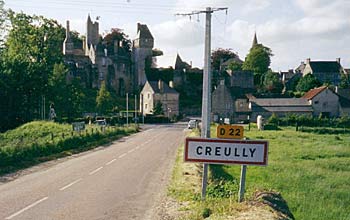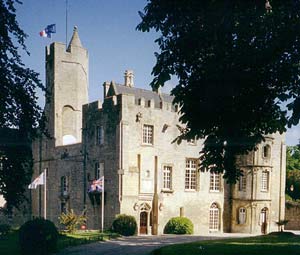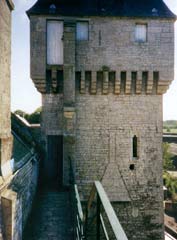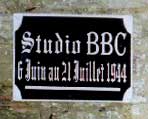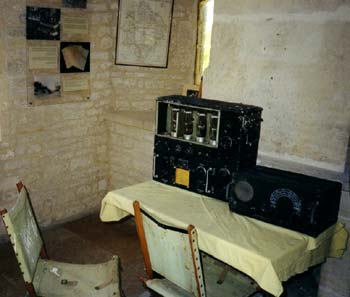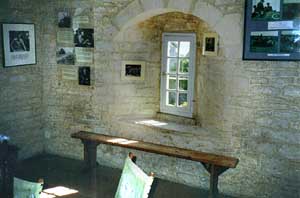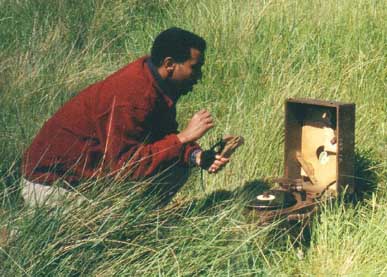Collecting and restoring old BBC equipment can, like working
for the BBC, sometimes take you to places which would otherwise remain simply
names in the history books; the summer of 2004 was no exception. In the run-up
to the D-Day commemorations, I'd been asked by BBC Live Events if I could
provide some WW2 vintage Outside Broadcast equipment and a 'Midget' portable
recorder from my collection in order to illustrate the type of equipment which
would have been used by BBC War Correspondents following the D-Day landings.
(See the
earlier page for pictures of the Midget
Recorders.)
And so, on May 21st I and a car load of equipment set sail for Normandy to
meet up with a BBC film crew and war correspondent Rageh Omaar.
On Saturday the 22nd following a morning spent 'filming' on Arromanches beach
with the 'Midget' recorder, we travelled inland to the small village of Creully.
This is where, in the days following the D-Day landings, the BBC set up an
extemporised studio and Radio Link in a tower of the castle.
This view shows the approach to Creully from the West. The castle with its
two towers can be seen on the left of the photo. Situated on high ground and
with the benefit of easily accessible towers, it's easy to see why the BBC
engineers would have been quick to take advantage of this location. A Radio
link was established here to enable reports to be 'beamed' directly back to
receiving stations on the south coast of England. The room which was occupied
by the BBC is in the rather Gothic looking tower to the extreme right of the
castle. The field to the right of the photo is where troops and the BBC reporters
and engineers set up camp.
This second photo shows the front entrance to the castle. Flags of the Allied
Nations fly from every available pole.
This is the view along the castle rampart to the entrance of the room used
by BBC engineers as a studio. A route trodden by the many war correspondents
and
engineers who broadcast from this studio. To the left of the door is a plaque
proudly declaring "Studio BBC". It rather curiously gives the dates
as June 6th to July 21st 1944 - although it is very unlikely that the BBC
actually arrived at the studio on June 6th.
Two views of the 'BBC room'. The equipment on the table
is a US Army field transmitter / receiver. The walls of the studio are lined
with historic documents and photographs detailing the work of the many correspondents
who broadcast from this site during the BBC's occupation.
Sixty years on and Rageh Omaar, who has reported later wars for the BBC, gets
to grips with the Midget disc recorder in the dunes near Arromanches.
It's thanks to the generosity of many retired BBC colleagues who've donated
items to my collection over the years that made it possible to play a tiny
part in the BBC's D-Day commemorations. My grateful thanks to them. -
Chris
Owen.
